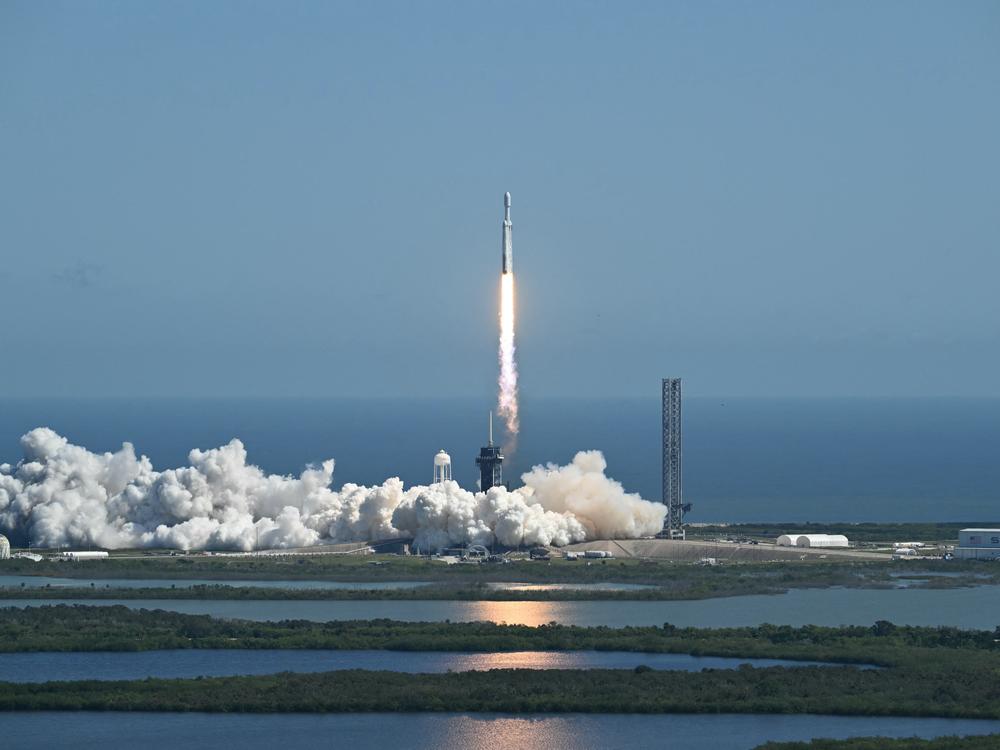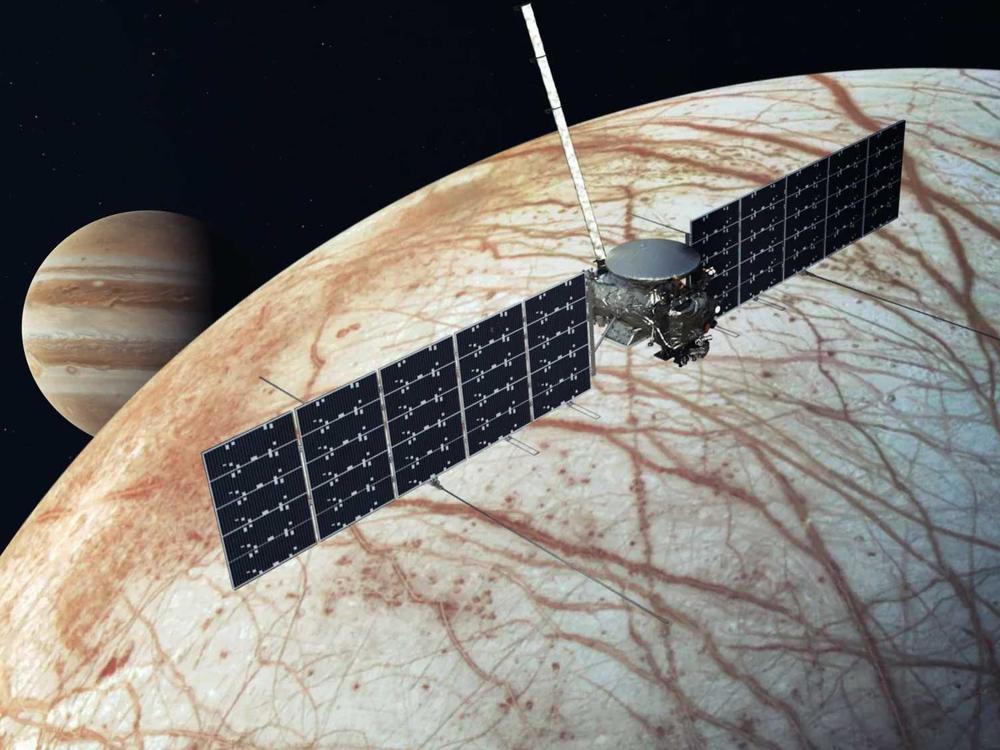Section Branding
Header Content
NASA spacecraft is on its way to Jupiter's Europa moon
Primary Content
A spacecraft that will study one of Jupiter’s moons launched Monday on a journey of more than six years to discover if the moon has the ability to support life.
The solar-powered spacecraft Europa Clipper ascended above clear skies through Earth’s atmosphere on a SpaceX Falcon Heavy rocket from NASA’s Kennedy Space Center in Florida.
It is expected to reach Jupiter in April 2030 to study Europa, the icy-surfaced moon, which is roughly the size of Earth’s moon and thought to have “ingredients for life,” such as water, NASA says.
"Europa could have all the ingredients for life as we know it," NASA Associate Administrator Jim Free said on a media call on Sunday. "Water, organics, chemical energy and stability. What we discover at Europa will have profound implications for the study of astrobiology and how we view our place in the universe."
The spacecraft has three goals, according to the agency, which are to “determine the thickness of the moon’s icy shell and its interactions with the ocean below, to investigate its composition, and to characterize its geology.”
Europa Clipper is carrying nine science instruments, including two that will catch dust and gas, and a gravity experiment that uses telecommunications systems, the agency says. Weighing 13,000 pounds (almost half of which is fuel), Europa Clipper has 24 engines and is about the length of a basketball court when its solar arrays are open.
The spacecraft is expected to reach Mars in February 2025 and swing back by Earth in 2026 to give Europa Clipper “enough energy to reach Jupiter” using the planets' gravity, NASA says.
Once the spacecraft reaches Jupiter in 2030, it will orbit the planet and begin making 49 close flybys of Europa in the spring of 2031, according to NASA.
Europa Clipper will face a challenge once it reaches the planet's moon — exposure to radiation, since the moon is within Jupiter’s magnetic field. To combat this, the spacecraft's electronics will be enclosed in a thick vault lined with aluminum and titanium aimed as a shield against radiation.
Europa Clipper will spend less than a day in the radiation zone and then leave, repeating the process two to three weeks later, according to NASA.
The mission is scheduled to end in 2034 with Europa Clipper crash-landing on another of Jupiter's moons, Ganymede.


